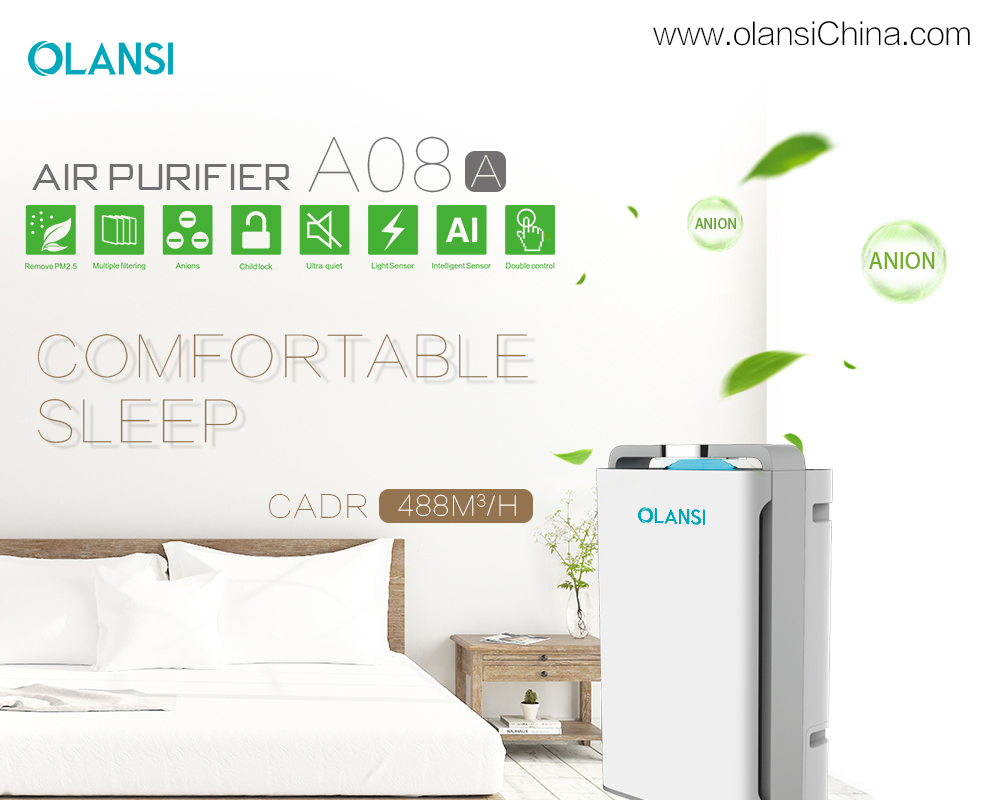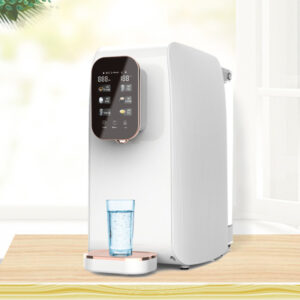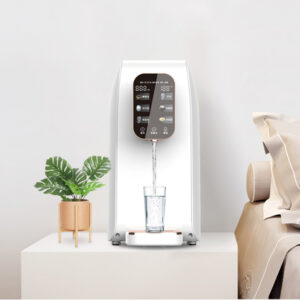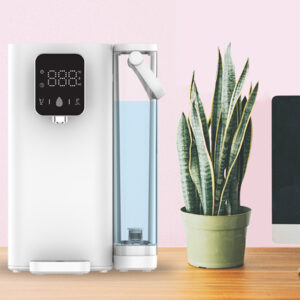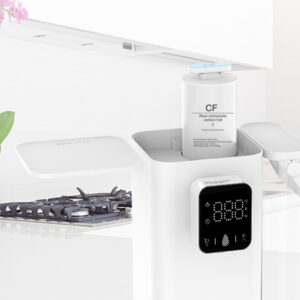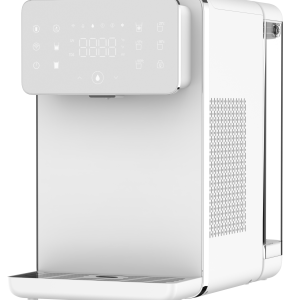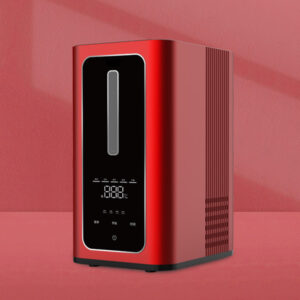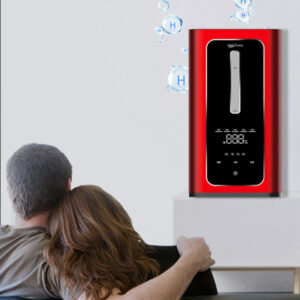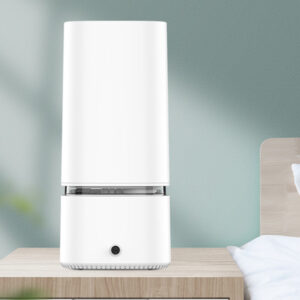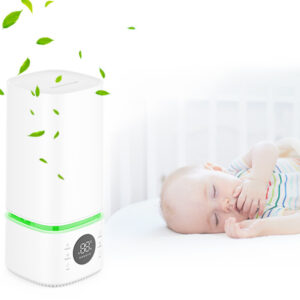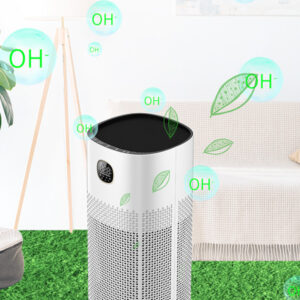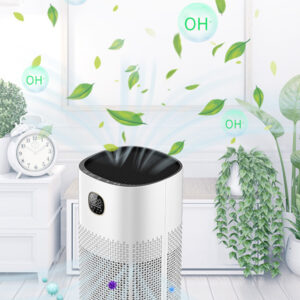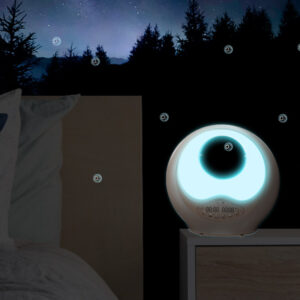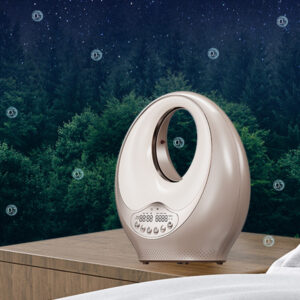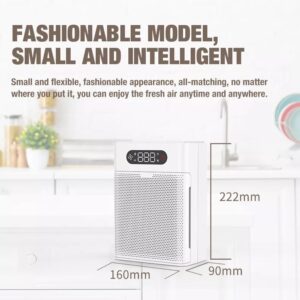How Does An Air Purifier Work?
How Does An Air Purifier Work?
Air purifiers have become essential tools in homes, offices, and other indoor spaces as awareness of indoor air quality grows. These devices are designed to remove contaminants from the air, such as dust, pollen, pet dander, smoke particles, and even microorganisms like bacteria and viruses. But how exactly do they achieve this? In this article, we’ll explore the science behind air purifiers, delving into the main technologies they use, how these technologies tackle specific pollutants, their limitations, and practical considerations for their use and maintenance.
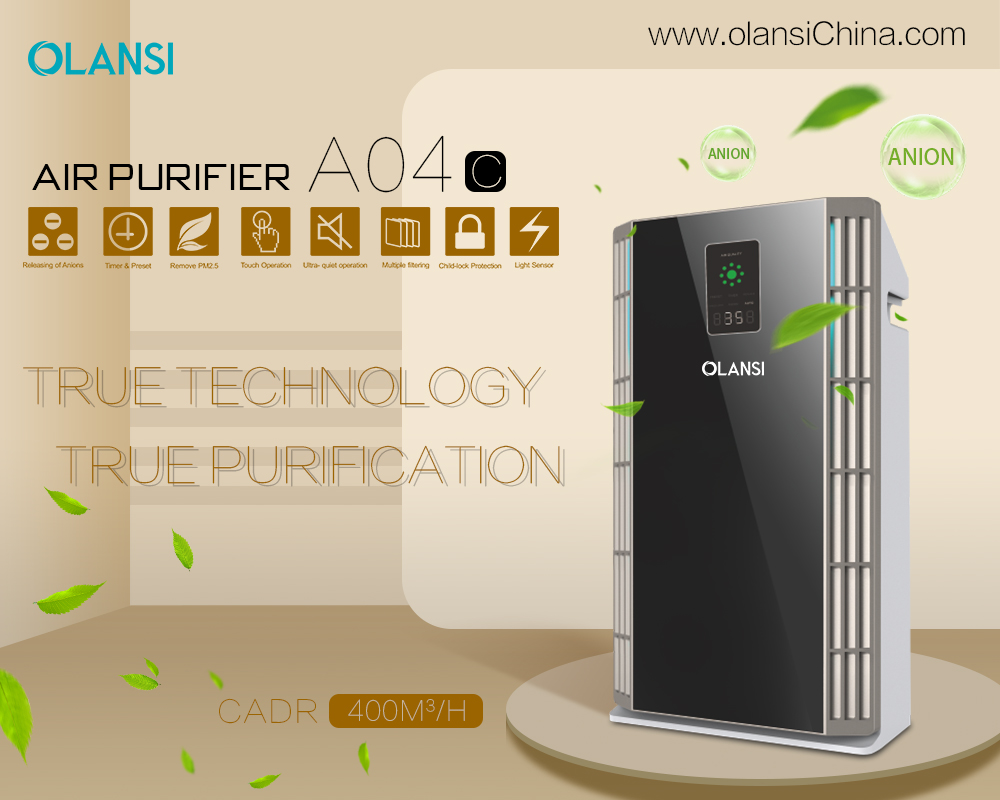
Introduction
Indoor air quality can often be worse than outdoor air due to trapped pollutants like dust, chemicals, and biological agents. According to the Environmental Protection Agency (EPA), indoor air can be two to five times more polluted than outdoor air, making air purifiers a valuable tool for creating healthier living environments. At their core, air purifiers work by drawing in contaminated air, processing it through various filtration or purification methods, and releasing cleaner air back into the room. The effectiveness of an air purifier depends on the technology it employs, with the most common being HEPA filters, activated carbon filters, UV light, and ionic purification. Let’s dive into how each of these works.
The Science Behind Air Purification
Air purifiers rely on a variety of technologies, each targeting specific types of pollutants. Below, we’ll explore the four primary methods in detail: mechanical filtration (HEPA), adsorption (activated carbon), germicidal irradiation (UV light), and ionization.
Mechanical Filtration: HEPA Filters
High-Efficiency Particulate Air (HEPA) filters are among the most widely used and effective technologies in air purifiers. A true HEPA filter must capture 99.97% of particles as small as 0.3 microns—smaller than the width of a human hair, which is about 50-70 microns. This makes them excellent for trapping allergens like pollen, dust mites, pet dander, and fine smoke particles.
How It Works:
HEPA filters consist of a dense mat of randomly arranged fibers, typically made of fiberglass. These fibers create a maze-like structure through which air is forced. Particles are captured through three key mechanisms:
Interception: As air flows through the filter, particles follow the airstream. When they come within a certain distance of a fiber (about one particle radius), they get caught.
Impaction: Larger particles can’t maneuver around the fibers due to their momentum and collide with them, becoming trapped.
Diffusion: Very small particles (below 0.1 microns) move erratically due to Brownian motion—a random zigzag caused by collisions with air molecules—and eventually stick to a fiber.
Interestingly, 0.3 microns is considered the “most penetrating particle size” (MPPS) because it’s where these mechanisms are least efficient individually. Particles smaller or larger than this are actually easier to capture, boosting overall efficiency.
Standards and Testing:
To qualify as “true HEPA,” filters must meet strict standards, often tested using the DOP (dioctyl phthalate) method, which verifies their ability to remove 99.97% of 0.3-micron particles. Some products marketed as “HEPA-like” don’t meet these criteria, so it’s worth checking certifications.
Strengths and Limits:
HEPA filters excel at removing particulate matter but are ineffective against gases, odors, or volatile organic compounds (VOCs). They’ve been a staple since their development for nuclear facilities in the 1940s and are now common in medical settings and homes.
Adsorption: Activated Carbon Filters
While HEPA filters tackle particles, activated carbon filters address gaseous pollutants, odors, and VOCs—chemicals released from paints, cleaning products, and furniture that can harm health over time.
How It Works:
Activated carbon is charcoal treated with oxygen to open millions of tiny pores between carbon atoms, creating a massive surface area—up to 3,000 square meters per gram. This allows it to adsorb (not absorb) contaminants. Adsorption means molecules stick to the carbon’s surface, rather than being soaked into it like a sponge. When air passes through, gases, VOCs, and odor-causing compounds adhere to the carbon, leaving the air cleaner.
The Activation Process:
The carbon—often derived from coconut shells or coal—is heated and exposed to steam or chemicals to enhance its porosity. The type and amount of carbon affect its capacity, with some filters tailored for specific pollutants like formaldehyde.
Strengths and Limits:
Activated carbon is unmatched for removing smells (e.g., cooking odors, pet smells) and chemical vapors. However, it doesn’t capture particles or microorganisms, and its pores eventually become saturated, requiring replacement. Combining it with HEPA filters is common for broader coverage.
Germicidal Irradiation: UV Light Purifiers
Ultraviolet (UV) light purifiers target biological contaminants—bacteria, viruses, and mold spores—using UV-C light, which has a wavelength of 200-280 nanometers.
How It Works:
UV-C light is germicidal because it penetrates the DNA or RNA of microorganisms, breaking their molecular bonds. This prevents them from reproducing, effectively neutralizing them. In an air purifier, air passes through a chamber where it’s exposed to UV-C lamps. The effectiveness depends on the light’s intensity and the exposure time, collectively called the “dose.”
Applications:
Beyond home air purifiers, UV-C is used in HVAC systems and hospitals to sterilize air. It’s particularly valuable in settings where airborne pathogens are a concern.
Strengths and Limits:
UV light excels at killing microbes but doesn’t remove particles, gases, or odors. It’s rarely used alone; instead, it’s paired with HEPA or carbon filters for comprehensive purification. Safety note: UV-C is harmful to skin and eyes, so it’s enclosed within the device.
Ionization: Ionic Purifiers
Ionic purifiers, or ionizers, take a different approach by charging particles in the air to remove them.
How It Works:
These devices emit negatively charged ions into the air via a process called corona discharge. These ions attach to positively charged particles like dust, pollen, or smoke, increasing their weight or altering their charge. The particles then either fall to the ground, stick to surfaces, or, in some models, are drawn to a positively charged collection plate inside the unit.
Variations:
Some ionizers operate without a fan, relying on ion movement to circulate air, while others use electrostatic precipitators with plates to trap charged particles more efficiently.
Strengths and Limits:
Ionizers are effective against fine particles and some allergens, often without replaceable filters. However, they can produce ozone—a lung irritant—as a byproduct, raising health concerns. Modern designs minimize ozone, but it’s a key consideration. They also don’t address gases or odors well and may leave particles on surfaces, requiring regular cleaning.
How Different Technologies Address Specific Pollutants
Each technology targets specific contaminants:
HEPA Filters: Best for particulate matter—pollen, dust mites, pet dander, and smoke. Ideal for allergy and asthma sufferers.
Activated Carbon: Perfect for VOCs, odors (e.g., cigarette smoke, cooking smells), and chemical fumes.
UV Light: Targets microorganisms—bacteria, viruses, and mold—making it useful in germ-prone environments.
Ionic Purifiers: Effective for fine particles and some allergens, though less versatile overall.
Many air purifiers combine these methods. For example, a unit with a pre-filter (for large particles), HEPA filter, activated carbon layer, and UV lamp can handle a wide range of pollutants, offering a multi-stage cleaning solution.
What Air Purifiers Can and Cannot Do
Understanding the capabilities and limitations of air purifiers helps set realistic expectations:
What They Can Do:
Reduce airborne allergens, improving symptoms for allergy sufferers (studies show up to 50% reduction in some cases).
Remove smoke, odors, and some chemicals.
Kill airborne microbes.
Lower overall pollutant levels indoors.
What They Cannot Do:
Eliminate settled dust or pollutants on surfaces—regular cleaning is still needed.
Remove all pollutants entirely, especially if sources (e.g., smoking, off-gassing furniture) persist.
Add oxygen or remove carbon dioxide—ventilation remains essential.
Work effectively without proper maintenance.
Air purifiers are a powerful tool but part of a broader strategy including ventilation and source control.
Practical Considerations
Choosing an air purifier involves several factors:
Room Size: Match the purifier’s capacity to your space. The Clean Air Delivery Rate (CADR) measures how quickly it cleans air (e.g., a CADR of 200 means it can purify 200 cubic feet per minute).
Pollutant Type: Select based on your needs—HEPA for allergies, carbon for odors, UV for germs.
Noise Level: Higher fan speeds can be loud, so check decibel ratings for quiet operation.
Energy Use and Cost: Look for energy-efficient models and factor in filter replacement costs (HEPA filters: $20-$100 every 6-12 months; carbon: more frequent).
Maintenance and Care
To keep an air purifier effective:
Replace HEPA filters every 6-12 months, depending on use and air quality.
Swap out activated carbon filters as they saturate (every 3-6 months).
Clean pre-filters or collection plates (in ionizers) regularly.
Wipe down the unit to prevent dust buildup.
Follow the manufacturer’s guidelines to ensure peak performance.
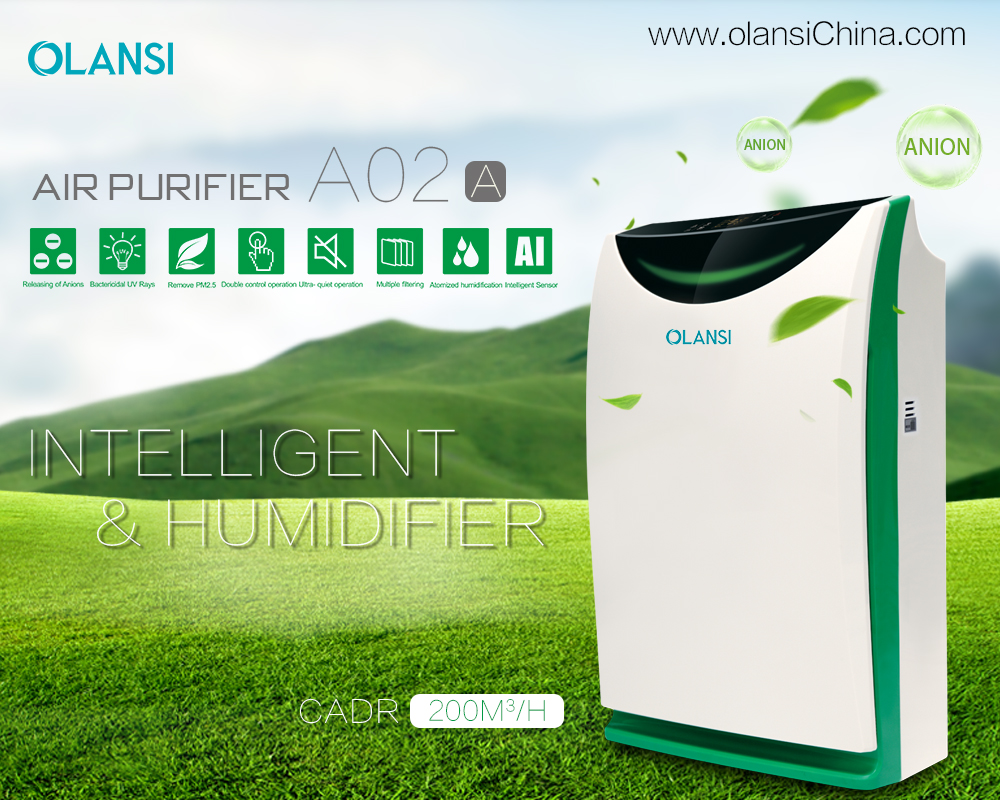
Conclusion
Air purifiers work through a combination of sophisticated technologies—HEPA filters trap particles, activated carbon adsorbs gases, UV light neutralizes microbes, and ionizers charge pollutants—each addressing specific air quality challenges. By understanding these mechanisms, you can choose a device tailored to your needs, whether it’s reducing allergens, eliminating odors, or fighting germs. While not a complete solution, air purifiers significantly enhance indoor air quality when paired with ventilation and pollutant reduction. With proper selection and maintenance, they’re a vital step toward a healthier home.
For more about how does an air purifier work, you can pay a visit to Olansi at https://www.olansgz.com/product-category/air-purifier/ for more info.


